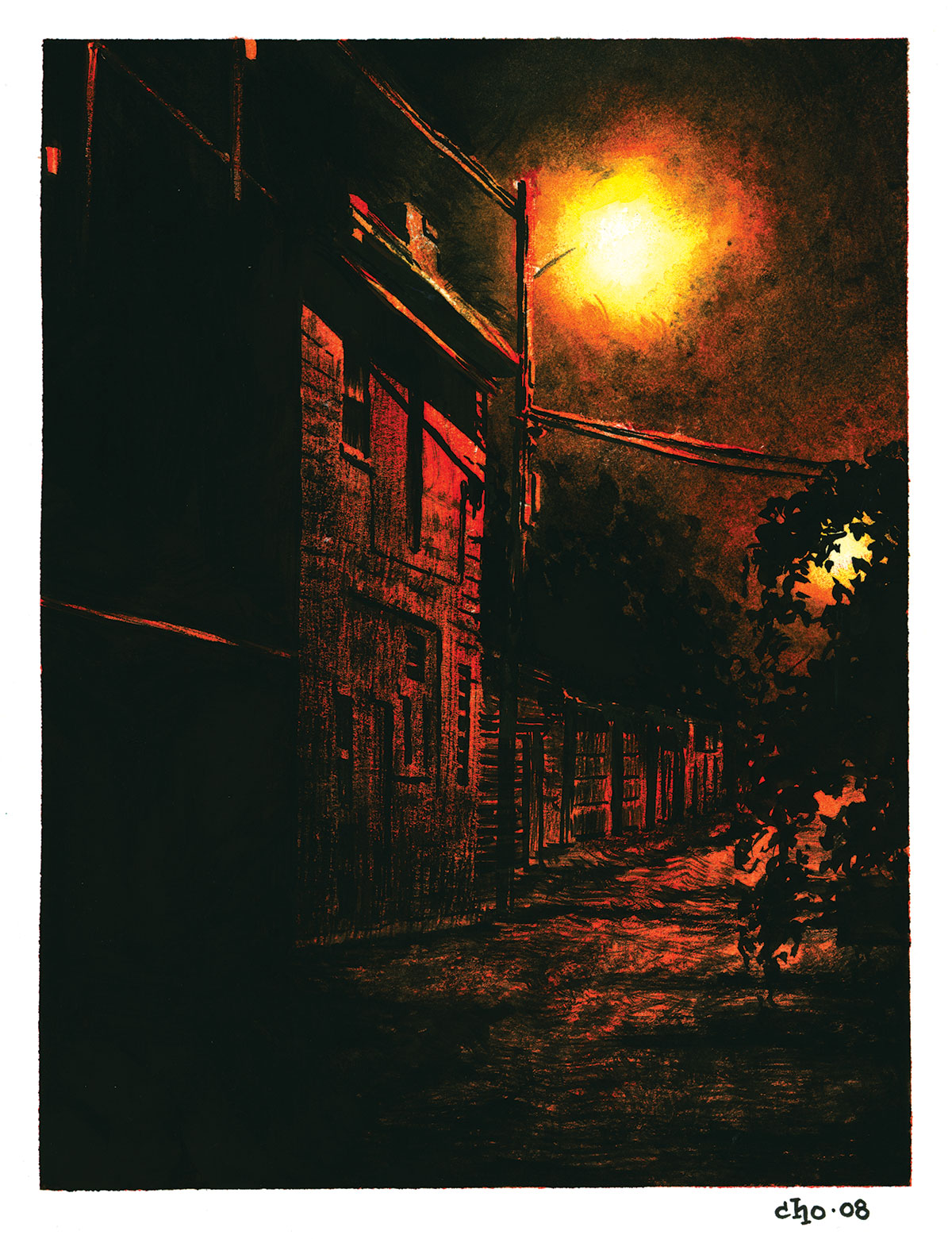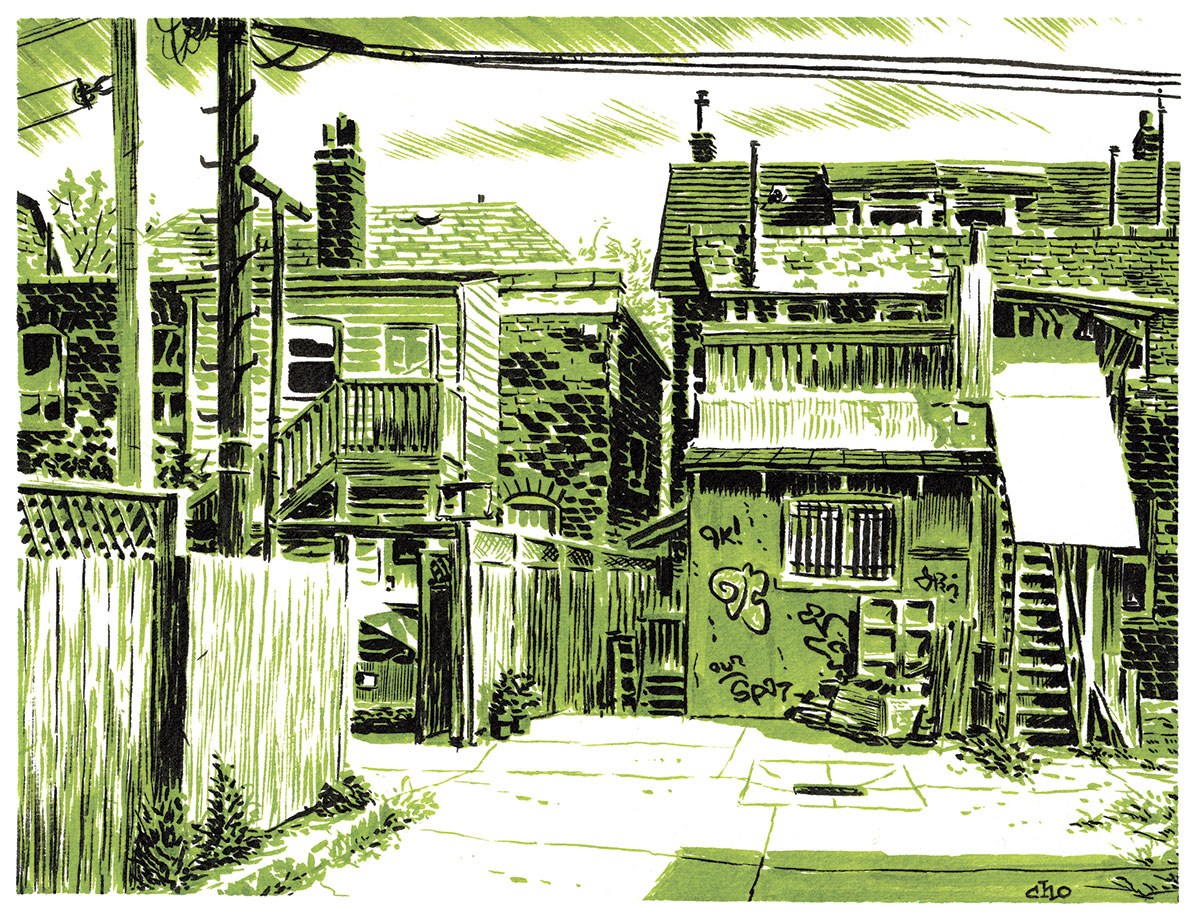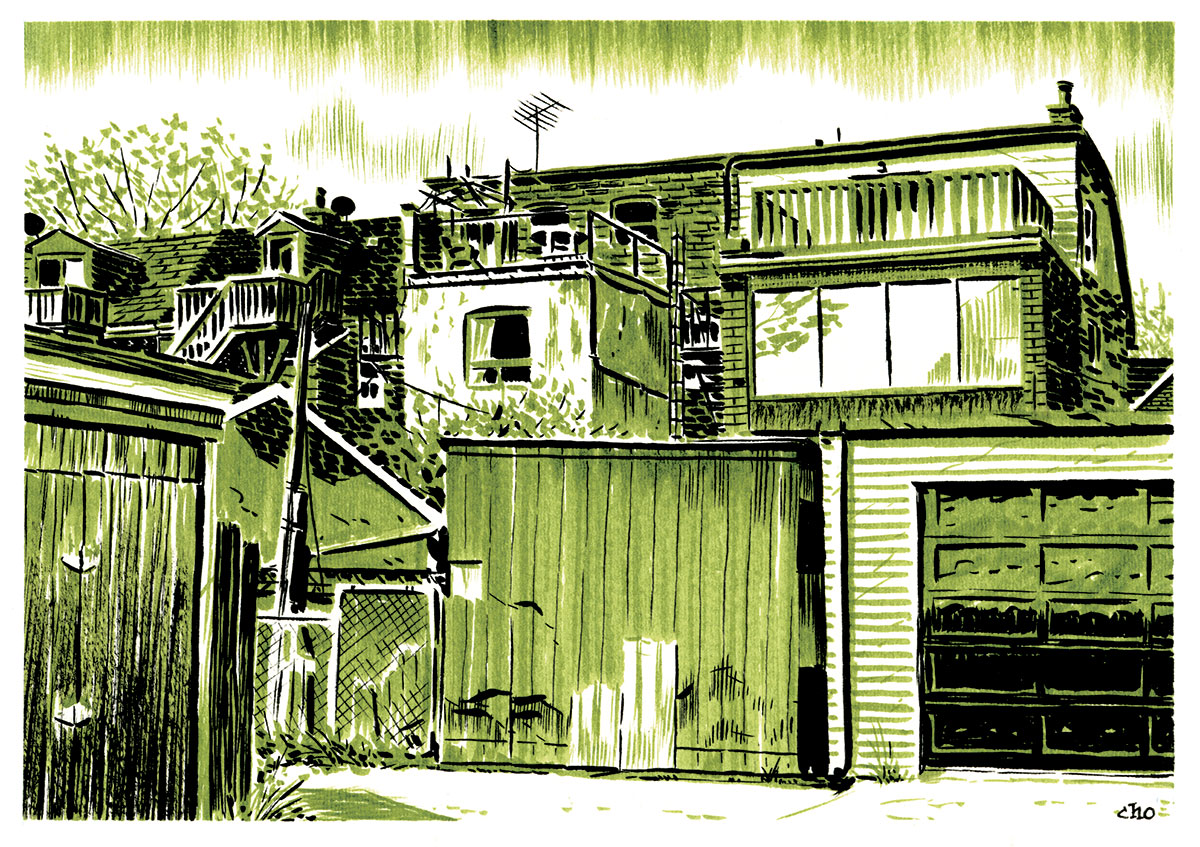
I’m often asked where or what is my favourite public space in Toronto. And though I’m tempted to name a strip of street or one of the city’s bustling parks, I always pick the old alleys and laneways.
When I moved downtown, from the cushy suburb of Willowdale, in the heart of North York, one of the first things about the urban form that struck me as different was the vast network of lanes hiding behind houses, businesses, and schools. It was in these semi-private enclaves that I cut my urbanism chops. Though originally I thought these lanes were mostly deserted and unused, I was quickly dispelled of this notion: I discovered a man training homing pigeons out of his garage, autobody shops open late into the night and early morning, giant rats, and urban art. I walked for hours in Toronto’s alleys, checking out the graffiti and converted coach houses. Once, I spent three months mapping the longest nearly uninterrupted route in the west end (it was five kilometres long, and went from the Gladstone Hotel up to the corner of Dupont and Christie).
But what still catches my eye more than anything when I enter an alley is its sheer wildness—an integral element not lost in the laneway illustrations of Michael Cho, to be published in an upcoming collection from Drawn & Quarterly. Sometimes the laneway is only four or five garages deep and comes quickly to a dead end; plants pop out from under fences and grow between cracks in the pavement; TV antennas dangle from chimneys; rooms that have been hastily added to the back of houses look like they’ll collapse at any second; trellised backyards are overgrown with grapevines whose grapes will soon be converted into wine.
What’s most compelling about alleys—and a vibe that Cho has infused in his art—is just how entirely different they are from front yards. People spend their energy keeping the face of their house tidy and trimmed—not unlike how you would present yourself on a first date. But the laneway face of a house is cluttered, confused, and often in a state of disrepair, not unlike how someone might look first thing in the morning, hungover after a wild night out. I’ve always felt you can learn more about your neighbours by looking at their home from the alley than from anywhere else on their property.
While people can be found in alleys doing nefarious things (like fighting or dealing drugs) or just plain ol’ boring stuff (like smoking or chatting), these spaces tend to be the most dynamic and inventive in the city. They are often unregulated and left for residents to shape as they please. From smokestacked workshops to artist studios, laneways offer a glimpse into how Toronto lives.


